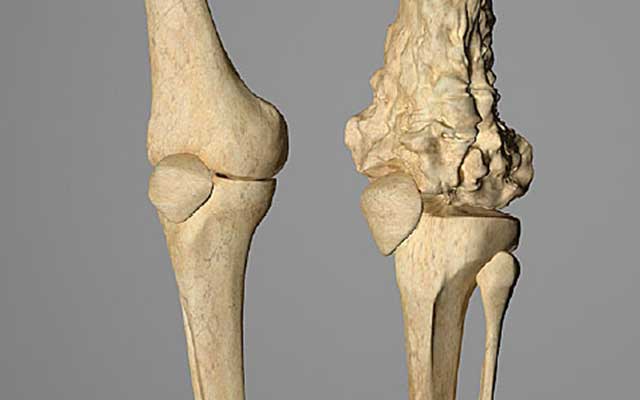The most common type of bone cancer is osteosarcoma. The cells that form bones are the places where it is formed. It also occurs in soft tissue outside the bone in very rare casesknown as extraosseous osteosarcoma. Though osteosarcoma can start in any bone, it is most often found in the long bones such as those in the legs or arms. In teenagers and young adults, it is normally found to develop. Sometimes in younger children and older adults, it is also found.
Symptoms
Osteosarcoma has many signs and symptoms. Some of them are:
- Swelling near a bone
- Bone or joint pain
- Sudden bone injury or bone break
The problem is that with other health issues, these symptoms can be mistakenly connected and there may be a delay in seeking medical help.
Causes
There is no clear cause of osteosarcoma and it occurs periodically. However, there may be an increase in risk due to some factors.
Risk factors
The risk of osteosarcoma is increased by some factors. Some of them are:
- Previous treatment with radiation therapy
- Certain genetic or inherited conditions
Complications
From its starting point, osteosarcoma can spread to other areas. This makes its treatment and recovery from it more difficult. A standard treatment mode is a surgery removing the tumour but sparing the limb. In certain cases, the patients may need to learn the use of an artificial limb (prosthesis) as there may be amputation of the affected part of the limb. It is better to consult the best surgical oncologist in Kolkata for proper advice.
Diagnosis
A physical exam, discussion of medical history and lab tests are normally the first steps in seeking a diagnosis. X-ray, computerized tomography (CT), magnetic resonance imaging (MRI), positron emission tomography (PET) and bone scan are some of the imaging tests which the cancer doctor may recommend.
Biopsy
A procedure called biopsy is often recommended by doctors. In it, a sample of tissue (biopsy) is removed from the tumour for lab testing. Surgical biopsy and needle biopsy are the two types of biopsy but need to be performed keeping the principle of Surgical Oncology in mind, as we need to plan reconstruction accordingly.
Treatment
In the treatment of osteosarcoma, a lot of important advancements are made. The following are the different treatment options available:
1. Surgery
Removing the cancer cells is the goal of the surgery. However, to maintain function and minimize disability, surgeons also perform operations. Limb-sparing surgery, amputation and rotationplasty are the different types of surgery.
2. Chemotherapy
Drugs are used to kill cancer cells in chemotherapy. Before and after surgery, doctors often recommend chemotherapy.
One has to keep in mind the multimodality treatment option and plan accordingly.


